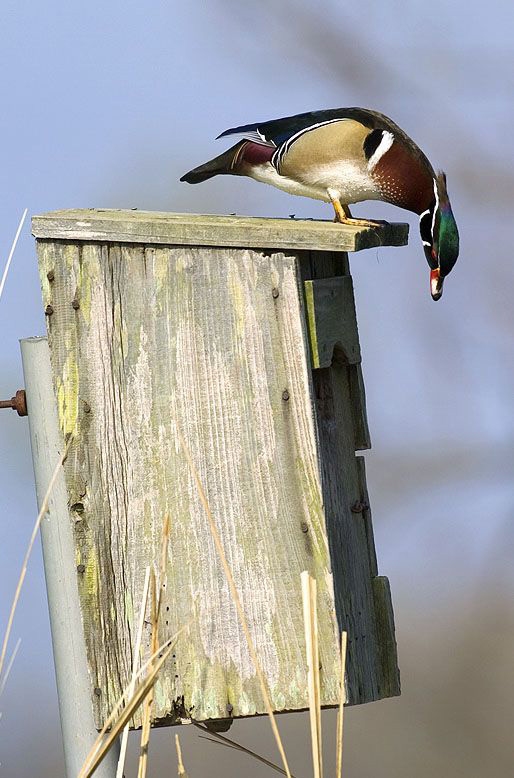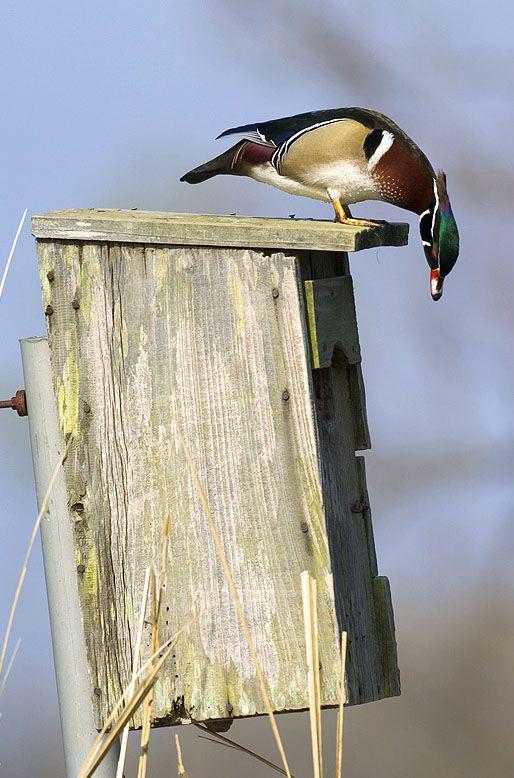
This is one of those times of the year when you are trapped between watching fishing shows on TV and wondering why the fish don’t bite nearly as well as they did back in December.
I have an idea for a project for one of the next weekends when the temperatures are expected to hover around that 0-degree mark. It is a project that very few people ever do, and if they do, they don’t get thinking about it until it is too late to do anything of benefit for the spring of 2021.
My project is building a wood duck nesting structure.
These are man-made structures that look like a long shoe box stood up on end. In years past, the wood duck, which is a cavity nester, would just find a hole in a dead cottonwood or similar tree and nest in the cavities they provided.
With the removal of almost all of these trees along lakes and wetlands, there was almost no place for this duck to make a go of it. It showed in the fact that their populations were continuing to decline. Along came the idea that we could replace these natural nesting areas with man-made structures that would make a suitable substitute.
As it turned out, this is just what happened. The utilization of man-made artificial nesting structures has now helped the wood duck population levels in certain areas of the United States to rebound to now make up the bulk of hunters’ fall harvest. In fact, the daily limit on how many wood ducks could be safely harvested has steadily increased over the past 25 years or more.
My dad, who is 88 years old and an industrial arts teacher by trade, was looking for some material to construct a few of these structures. I reached out to a saw mill operator who had been cutting old high line poles into dimension lumber (old high line poles were mostly made from cedar trees) which are very resistant to rot. He had a big pile of scraps of many different thicknesses and lengths. All he asked for in return was a few completed wood duck boxes he could put up in a spot where he had seen many of these ducks in the past.
Although it takes much greater effort than starting with first-run material, with the right tools and some pretty impressive waterproof glue, he has managed to piece together about eight sturdy boxes and has about half of the rough material left for the next go-around on this volunteer effort.
The special key to this production is that it is so easy to include youth or non-outdoor folks during all phases of construction and then the erection of said boxes.
We live in a world that is divorced from most of the natural world. How many kids have ever waded into a creek or wetland with a net in hand to see what they might discover? I can tell you from my many youth efforts that, given the chance, they would all jump at the opportunity. One group of 4-H kids spent 3 1/2 hours on a nature walk with me that was originally set to last for 45 minutes. It was cool to see the light in their eyes when they were exposed to all things natural.
A box built with material purchased at a lumberyard costs about $60. You do not need to be a competent carpenter to engage in this great conservation/youth activity, nor do you need tons of high end expensive shop tools. It takes a little initiative and a few hours in the garage. It really doesn’t matter if the box you construct is built to any certain specifications, but I do have the plans for a box which research has shown to be very effective and successful.
The plans for a duck box can be found with the use of an easy Google search, but if you can’t find them, just reach out to me at scottarall@gmail.com and I will personally send you one in the mail within two business days.
Don’t wait until the baseball season starts to get engaged in the outdoors. By then it is often too late.
The Super Bowl is over and winter is far from gone. Make a duck box and it will guarantee at least one afternoon in the tall grass when you put it up this spring. In about a month I will share with you all you need to know about the placement of the box you made and how to keep all of the uninvited guests out of it as well.
Scott Rall, Worthington, is a habitat conservationist, avid hunting and fishing enthusiast and is president of Nobles County Pheasants Forever. He can be reached at scottarall@gmail.com or on Twitter @habitat champion.



